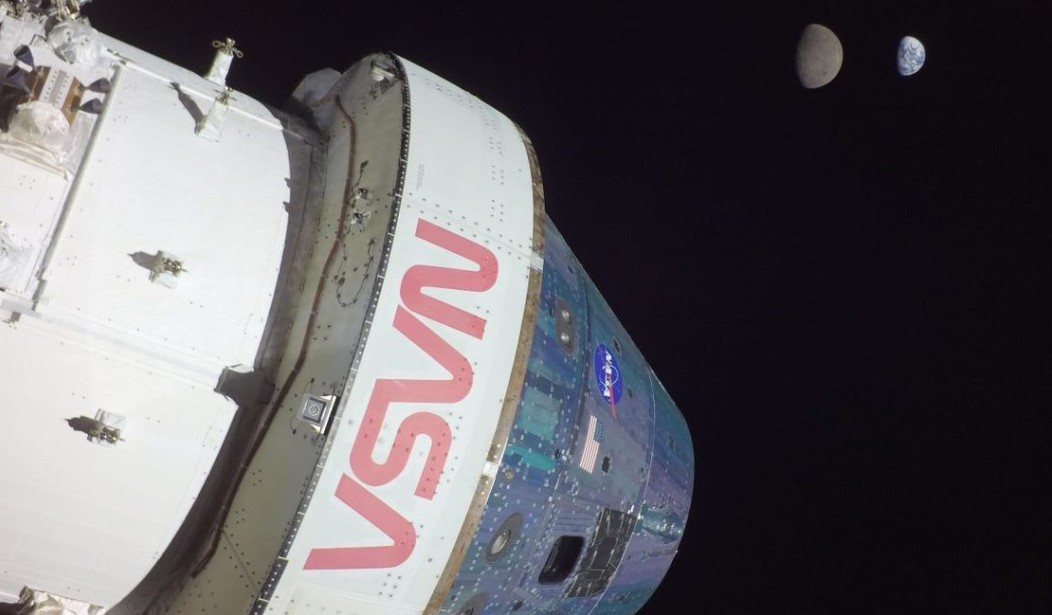Artemis I just completed a textbook-perfect mission, traveling further into deep space than any human-rated spacecraft has ever gone. The way is now paved for humans to return to Luna and establish a permanent presence there, beginning with Artemis III.
So the first manned test mission for the Orion spacecraft, Artemis II: when can we expect to see it fly?
Yeah, about that. It’s probably gonna be a couple of years.
Back when NASA was much more serious about timetables, there wasn’t much time wasted between spaceflights. The Saturn V rocket that took men to Luna from 1969-72, had its first unmanned test flight in November of 1967. The first crewed flight took place just 13 months later. Those 13 months included half of a two-year delay in manned space flight after the tragic Apollo 1 launchpad fire that killed Gus Grissom, Ed White, and Roger Chaffee during a rehearsal.
By every account, Artemis I succeeded in every way during a much more difficult and intricate mission than Apollo 4. So why can’t NASA get Artemis II off the ground probably any sooner than 2025? “I would say that we’re going to try our best to get there,” in 2024, Orion program director Howard Hu told space reporter Eric Burger last week, but don’t count on it.
There are two causes for the long delay: one structural and one cultural.
The structural problem was due to a budgetary constraint from nearly a decade ago. With a hundred-million-dollar hole in NASA’s budget, they figured they could reuse the avionics components on Artemis I in a future flight to plug the hole. Due to launch schedules at the time, the 27-month turnaround time (!!!) to refurbish the avionics wasn’t a big deal — it would be at least a couple of years before they were needed again.
The then schedules got changed, and now that $100 million in savings will end up costing hundreds of millions in delays. As a taxpayer, I’m enraged. As a space exploration nut, I’m saddened.
Also for our VIPs: Florida Man Friday: The Baby Jesus Did Not Need to See That
NASA’s big problem, however, isn’t the fiscal blowback from a decision made out of necessity way back in 2013.
The problem is that NASA — and everyone else from Boeing to United Launch Alliance to France’s Ariane to Russia’s Roscosmos — should have torn up every spaceflight and spaceship plan they had back in 2017.
On Dec. 22, 2015, SpaceX made spaceflight history by launching a Falcon 9 rocket into orbit and then landing it safely again on Earth — for study, refurbishment, and eventual reuse. Previous rockets (except partly for the Space Shuttle, which landed like a plane) were more disposable than Kleenex. On March 30, 2017, SpaceX became the first company to refly a used rocket successfully. Some of the company’s engines have gone to orbit and back more than ten times.
Over the course of those 15 months (recycle times are now much shorter), it became obvious to everyone that spaceflight had been changed forever. Except for some infrequent, high-energy orbits for the largest satellites, spaceships, and telescopes, the Falcon 9 showed that there was never a reason not to reuse a rocket.
Artemis I cost $4 billion just to launch the SLS rocket that took Orion into deep space, never to be used again.
The only bits NASA did decide to reuse — Orion’s avionics — require 27 months to be removed, inspected, and recycled for the next mission.
For our lead agency in the New Space Race against Communist China, anything that expensive and that slow is unacceptable.
And that’s why Artemis I being a great success this month might just make it a great failure over the long run. NASA has got to move far, far away from the slow/expensive/disposable launch mindset.
Artemis I performed so well — and so did SLS, years late and ten billion or so over budget — that it might very well delay NASA’s day of reckoning.
That, too, would be infuriating to taxpayers and saddening to space exploration nuts.










